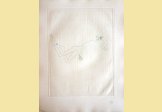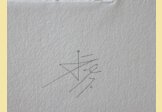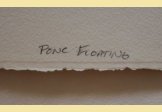Ponc Floating
| Artist | : | Joan Ponc |
| Medium | : | Other - Etching |
| Size unframed | : | 14.25"/19.25" |
| Size framed | : | N/A |
| Signature Info | : | Hand Signed - Numbered by Artist |
| Frame Info | : | Not Framed |
| Condition | : | Very Good |
| Year | : | Unknown |
Description
Joan Ponc Etching - "Ponc Floating" - Hand Signed In Pencil By The Artist - Limited Edition of 30 (XXX) - Numbered In Pencil "XXII/XXX" - Paper Size Appx 25.5" x 19" - Image Size Appx 19.25" x 14.25" - On Heavy Wove Paper - Unframed
- Artist: Joan Ponc
- Title: “Ponc Floating”
- Medium: Etching
- Year: Unknown
- Edition: 22/30
- Size: 19.25 ins. x 14.25 ins.
- Signature: Hand signed/Numbered by Artist
Biography
Joan Ponç (Barcelona, Spain 1927 - Saint Paul de Vence, France 1984). Painter, engraver, draughtsman, illustrator, professor. He began his artistic training in 1944, studying drawing and painting at the studio of Ramón Rogent (1920-1958) and at the Academy of Fine Arts, under López Obrero. In 1946, together with Augusto Puig, Pedro Tort (1916-2006) and Francesc Boadella, he participated in the exhibition, Tres Pintors y Un Escultor, held by the Societat Excursionista Els Blaus, in Barcelona. In 1947, he published the Dau al Set magazine, together with poet Joan Brossa, philosopher Arnau Puig and painters Antoni Tapiès (1923-2012), Modest Cuixart (1925) and Joan Joseph Tharrats (1918). In 1948, he met Joan Miró (1893-1983) and Salvador Dalí (1904-1989), and had an album of lithographs published by Eric Tormo and João Cabral de Melo Neto (1920-1999). In 1949, together with Tapiès and Cuixart, he participated in the exhibition, Un Aspecto de la Joven Pintura Catalana, held at the Cercle Maillol, of the French Institute of Barcelona, with support from the Cobalto 49 magazine and an introductory text by João Cabral de Melo Neto. In 1953, Ponç moved to Brazil, bringing a letter of recommendation from Miró addressed to Ciccillo Matarazzo (1898-1977), then director of the Bienal Internacional de São Paulo [São Paulo International BIennial]. During his 10 year-period living in São Paulo, Ponç dedicated himself to art training, founding and directing the art school L' Espai ("the space", in Catalan), where Jeanette Musatti (1944), José Nemirowski and others have studied. Among the exhibitions he held in Brazil, the two solo exhibitions at the Museu de Arte Moderna de São Paulo (MAM/SP) [Museum of Modern Art of São Paulo], in 1955 and 1957, stand out. By the time he returned to Spain, in 1963, his work had achieved international recognition, as evidenced by several exhibitions held in Europe and the United States, as well as by the grand prize of drawing which he won at the 1965 São Paulo International Biennial. From this time period, date the illustrations he executed for several books. One of his last commissions were the paintings he made for the roof of the Barajas airport in Madrid.
Critical Commentary
The work and the trajectory of Joan Ponç were marked by the experiments of the first avant-garde movement to emerge in Spain after World War II. Tàpies, and later Miró and Dalí, were influential on his adoption of the surrealist vocabulary, which he never abandoned. Another crucial feature of his art from the outset, was his close relationship with writers and literature. The phases of his work match the series of drawings, engravings and paintings he executed over time: Anxieties, Hallucinations, Perversities, Death, Dreams, Insects and Torture. During his Brazilian sojourn, he produced the series Bulls, 1952 - 1953, Heads and Birds, 1959, and Classical Heads, 1960. His composition combines elements drawn from various places: the animal and the vegetal domains; the dream world and the supernatural; Middle Age mythology and anatomy; the Gothic and the Romanesque. Interwoven lines, undulations, arabesques and touches of color weave their “pictorial narratives”, whose central motif is always the figure. Human bodies – their sexual and erotic motivations, but also their deformations and mutilations – coexist with all sorts of creatures, from minute to gigantic. Moons, suns and flowers (reminiscent of Miró) make up the settings, which also include “a real procession of monsters coming from a delirium spurred by loneliness”, remarked the critic Jacques Lassaigne. Between the gloomy and the fantastic, the grotesque and the extraordinary, Ponç’s visionary force produces successive allegories of life and death. The appraisal of his work requires weighing the influence of Surrealism on contemporary arts in general, and on Brazilian arts in particular.





